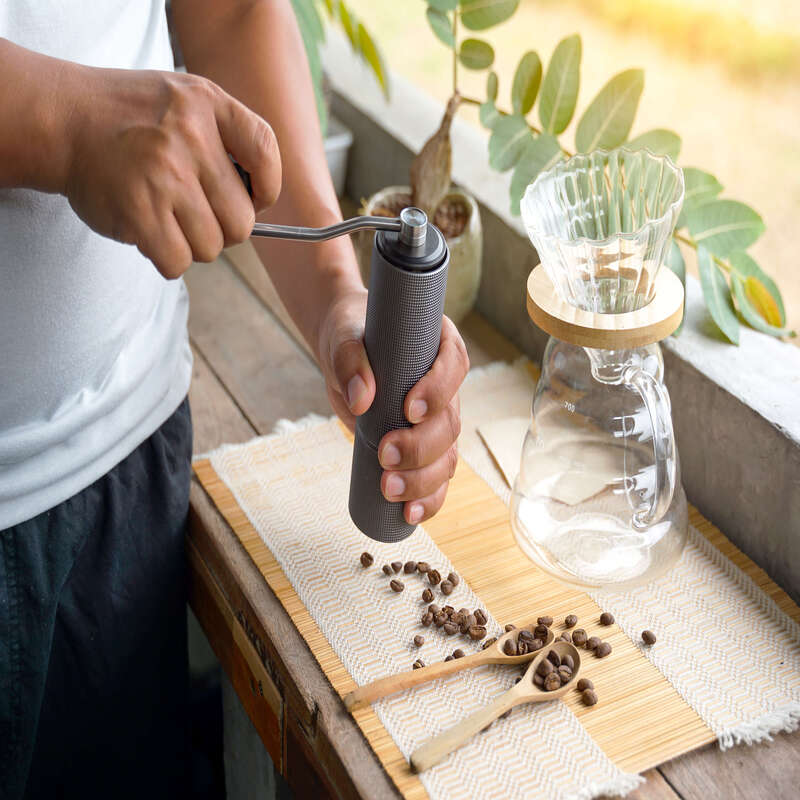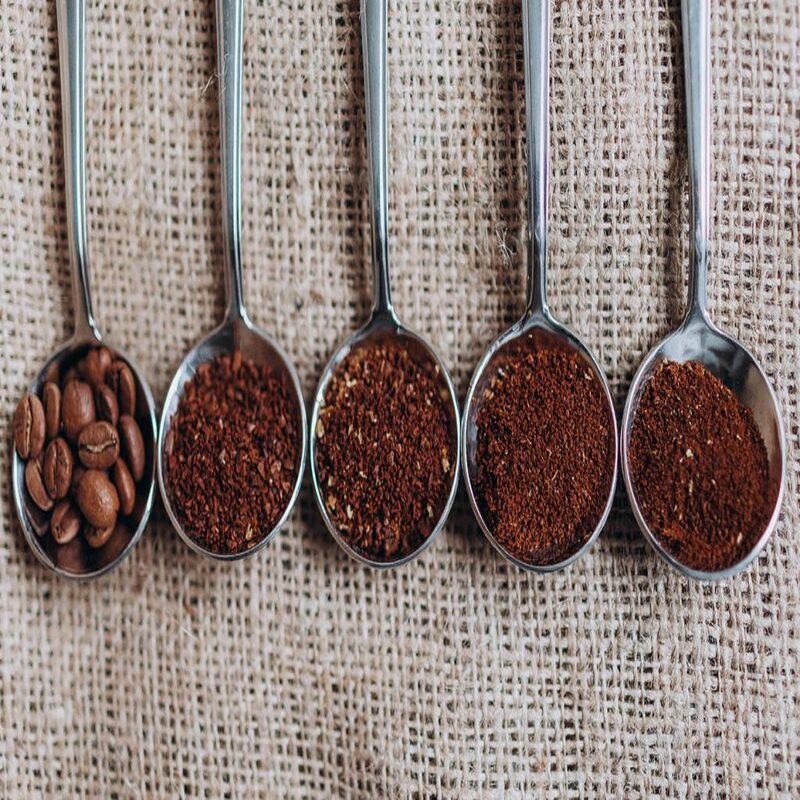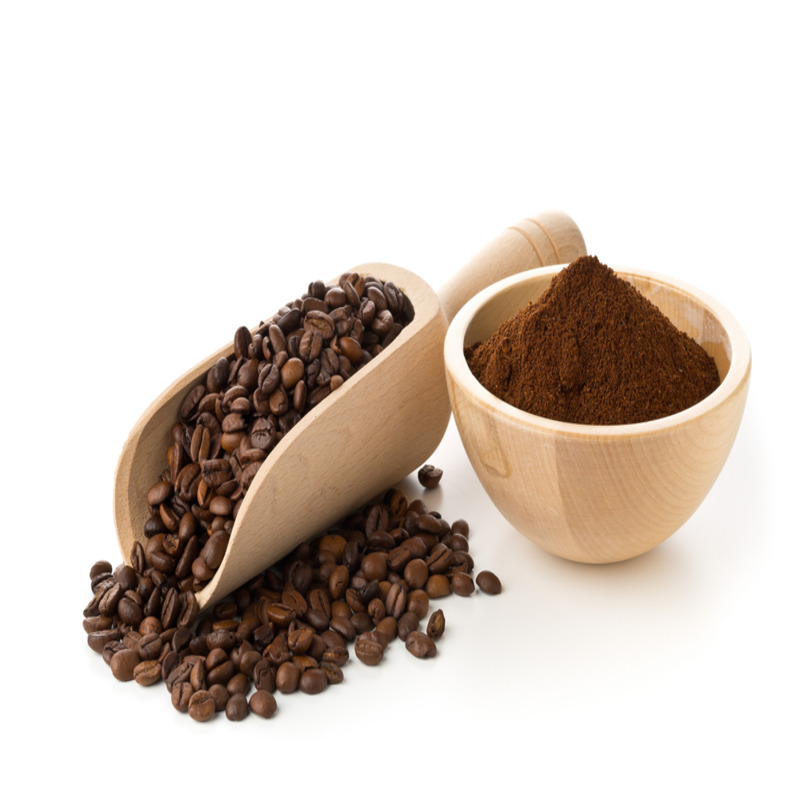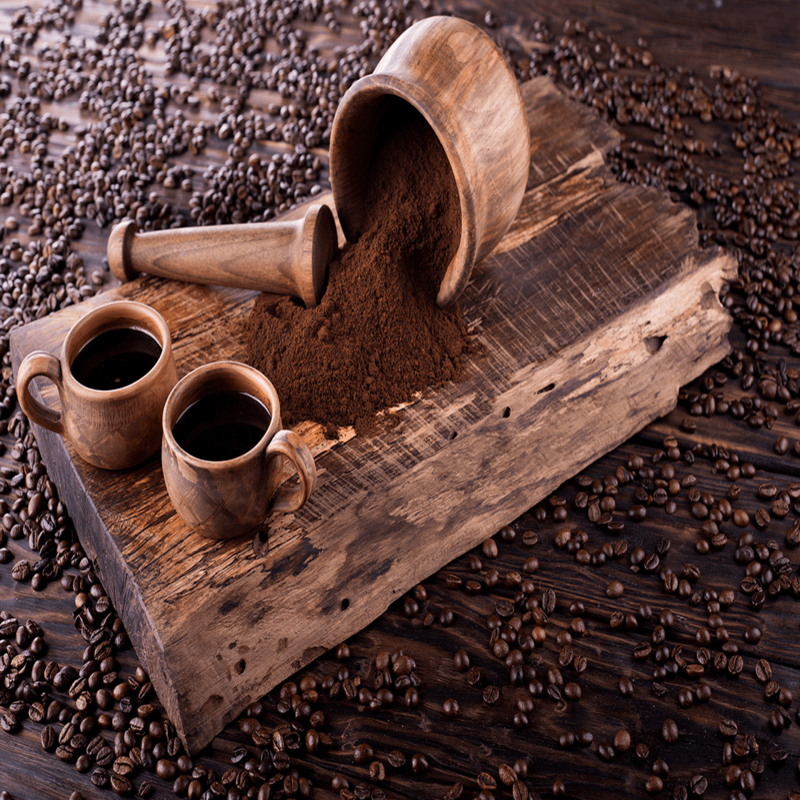Introduction to Grinding Coffee Without a Grinder
If you love coffee, you know a grinder’s role is key. But, if you’re missing one, no worries. With creativity, you can still enjoy your favorite brew. From kitchen tools to manual methods, there are several ways to grind coffee beans without a coffee grinder.
First, let’s tackle why pre-ground coffee may not be the best choice. Ground coffee starts losing its flavor quickly due to oxidation. This is why many prefer grinding at home, right before brewing.
If you lack a grinder, kitchen appliances like a food processor or blender can help. You can also get hands-on with a rolling pin or mortar and pestle. Even a stone grinder used traditionally in kitchens around the world can do the trick.
Each method requires care. The aim is to avoid heating the beans too much, which can affect taste. A coarse grind works best for methods like French press or cold brew, while a fine grind suits espresso makers.
The grind size affects how water extracts flavors from the grounds. That’s why grind size is crucial. The finer the grind, the more surface area for water to work on, affecting brew strength and taste.
This guide will explore various grinding options you can use when your grinder is out of reach. You’ll learn how to achieve the perfect grind for a delicious cup of coffee, no matter the circumstances.
Using a Food Processor to Grind Coffee
If you don’t have a grinder, no panic. A food processor can come to your rescue. Here, we’ll dive into how to use this common kitchen tool to grind your coffee beans effectively. With the right technique, you can enjoy a fresh, flavorful brew without the need for specialized equipment.
Step-by-Step Guide to Grinding Coffee in a Food Processor
- Measure Your Beans: Start by measuring your coffee beans. Aim for a small, consistent amount to ensure even grinding.
- Prepare the Processor: Place the beans in the food processor. Make sure the lid is secure before you begin.
- Pulse in Short Bursts: Press the pulse button in short bursts. This helps prevent the beans from overheating, which can affect flavor.
- Check Consistency: Stop frequently to check the grind size. This prevents over-grinding and allows you to adjust as needed.
- Repeat if Necessary: If the beans aren’t ground to your liking, continue pulsing in short bursts.
Tips to Achieve the Best Grind with a Food Processor
- Do Not Overfill: Avoid filling the processor too much. This helps achieve a more uniform grind.
- Be Patient: Grinding coffee beans to the right size takes patience. Don’t rush the process.
- Stay Cool: Take breaks between pulses to avoid heating the beans. Cool beans will grind more consistently.
Using a food processor is a handy way to grind coffee beans without a coffee grinder. Remember to pulse cautiously and check the consistency. These steps help craft a delightful cup of coffee right at home.
The Blender Method: An Alternative Grinding Solution
Missing a grinder doesn’t mean you can’t grind coffee beans. Let’s look at how a blender can help.
Blenders often have a “grind” setting, perfect for coffee beans. If yours doesn’t, don’t worry. The “pulse” feature can work just as well.
How to Use Your Blender to Grind Coffee Beans
- Portion Your Beans: Pour a small, manageable amount of coffee beans into your blender.
- Pulse Away: Use quick bursts to chop the beans. This avoids overheating and preserving taste.
- Check the Texture: Frequently stop to look at the grind. Adjust pulsing as needed for the right consistency.
- Shake the Blender: Occasionally shake it. This step helps even out the grind across all beans.
Tips for a Consistent Grind Using a Blender
- Keep it Short: Only pulse for a few seconds at a time to stop the beans from warming up.
- Even Distribution: Spread beans evenly on the blender blade before starting. This will give you a uniform grind.
- Blend in Batches: If you have a lot of beans, blend in smaller batches. This way, all beans get evenly ground.
Using a blender to grind coffee can be straightforward and effective. Remember, patience and frequent texture checks are key to achieving the perfect grind for your coffee.
Rolling Pin Technique for Coffee Bean Grinding
In a pinch, a rolling pin can serve as a makeshift grinder. This manual method is straightforward but requires some effort. Here’s how to do it:
Step-by-Step Guide to Using a Rolling Pin
- Measure and Bag Your Beans: Take a small portion of coffee beans and place them in a sturdy Ziploc bag.
- Get Rolling: Lay the bag flat on your counter. Use the rolling pin to firmly crush the beans.
- Check Consistency: Open the bag to check the grind size. You’re aiming for a uniform crush.
- Roll Again if Needed: If the beans aren’t crushed evenly, close the bag and roll again.
Grinding with a rolling pin is a simple solution when you lack specialized gear. It gives you control over the coarseness, important for brewing methods like French press or cold brew. However, this way may not yield the fine grind needed for espresso.
Tips for Better Grinding with a Rolling Pin
- Stay Even: Make sure to apply consistent pressure for an even grind.
- Work in Batches: If you have more beans, crush them in smaller groups to manage the grind better.
- Protect the Countertop: Consider using a cutting board beneath the bag to avoid damaging your counters.
Using a rolling pin is not just an alternative method; it can be quite satisfying. Try it and enjoy your hand-crafted brew!
Mortar and Pestle: The Traditional Approach
When you are without a grinder, a mortar and pestle can save your coffee day. This old-fashioned tool is perfect for grinding coffee the traditional way. Here’s how to put it to good use.
How to Grind Coffee Beans with a Mortar and Pestle
- Measure Your Beans: Start with a small quantity to ensure even grinding.
- Get Grinding: Place beans in the mortar and use the pestle to press and twist.
- Check the Grind: Look for a consistent medium grind for optimal extraction.
- Grind Again if Required: Continue grinding until you reach the desired consistency.
Using the mortar and pestle may take more elbow grease, but it allows for a controlled and precise grind. This can be especially useful if you’re aiming for a specific brew method that requires a particular grind size.
Tips for Mastering the Mortar and Pestle Technique
- Use a Firm Grip: Hold the pestle tightly for the best grinding control.
- Grind Slowly: Take your time and grind in a consistent rhythm.
- Avoid Spillage: Keep the beans in the center of the mortar to prevent them from spilling out.
The mortar and pestle method is not just about grinding; it’s also about enjoying the hands-on process of preparing your coffee. Give it a try and you may find pleasure in the simplicity of this traditional method.
The Stone Grinder (Sil Batta) Method
When you think you’ve tried all methods to grind coffee without a grinder, don’t overlook the Stone Grinder, also known as Sil Batta. This traditional kitchen tool can grind coffee beans effectively while maintaining their natural flavors. Here’s how to get started:
How to Use a Stone Grinder to Grind Coffee Beans
- Measure Your Beans: First, take an amount of coffee beans suitable for your needs.
- Get Set: Place the beans on the flat stone surface (Sil).
- Start Grinding: With the grinding stone (Batta), press and roll over the beans.
- Check for Consistency: Pause to check if the coffee is evenly ground.
- Continue if Needed: Grind until you’ve achieved the desired grind size.
Grinding coffee using a Stone Grinder can be rewarding and efficient. It ensures that you’re actively involved in the brewing process, and you’ll appreciate your cup of coffee even more.
Tips for Grinding Coffee with a Stone Grinder
- Keep it Steady: Apply even pressure while grinding to get uniform grounds.
- Go Slow: Rushing might lead to unevenly ground coffee. Take your time.
- Stay in Control: Avoid letting beans escape by keeping them in the center.
The Stone Grinder offers a unique way to grind coffee beans, making the process an art form. It’s perfect for those who value tradition and craftsmanship in their coffee routine.
The Importance of Coffee Grind Size for Brewing
Achieving the perfect cup of coffee is a craft. This craft starts with the right coffee grind size. Different brewing methods need different grind sizes. The reason is that grind size affects how water interacts with the coffee grounds. It influences the speed and efficiency of the extraction process. Let’s explore why grind size is crucial for your brew.
What Coffee Grind Size Means for Your Brew
A coarse grind is best for methods like French press or cold brew. It allows water to flow through easily, pulling flavors without over-extraction. A fine grind, ideal for espresso, slows down the water. This makes for a stronger brew, as more coffee surface is in contact with water. But be careful, as too fine a grind can make the coffee bitter.
Consistency in grind size also matters. It ensures all coffee particles brew at the same rate. Uneven grounds can lead to a mix of under and over-extracted coffee in the same cup. That’s why aiming for a consistent grind is part of the art of coffee making.
Understanding Extraction
Extraction is about balance. It’s pulling the right flavors from the coffee beans into the water. Too little extraction and your coffee will taste weak and sour. Too much and it becomes bitter and harsh. Grind size is a key player in finding the perfect balance for your coffee.
Keep these points in mind when choosing a grind size. They will help you brew coffee with the taste and strength you love. With the right grind, you’re well on your way to a great cup of coffee, even without a grinder.
Tips and Tricks for Perfecting Your Grind
When grinding coffee beans without a grinder, achieving the right grind size can be tricky. But with a few handy tips, you can get closer to that perfect brew. Here are some pointers to help you master your grind, no matter the method you use.
- Go for Freshness: Use fresh beans for the best flavor. Stale beans won’t give you a good brew.
- Be Consistent: Aim for uniform grind size. This ensures even extraction and better flavor.
- Find the Right Texture: Match the grind to your brewing method. Coarser grinds suit French press and cold brew, finer grinds are for espresso.
- Check Often: During grinding, stop and check the grind size frequently. Adjust your method as needed.
- Control Temperature: Prevent beans from heating up. Warm beans can lose flavor.
- Clean Tools: After grinding, clean your tools. This keeps old grounds from affecting your next brew.
Follow these guidelines, and you stand a solid chance at making that ideal cup of coffee. Practice makes perfect, so don’t be afraid to try different methods until you find the one that works best for you.





